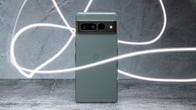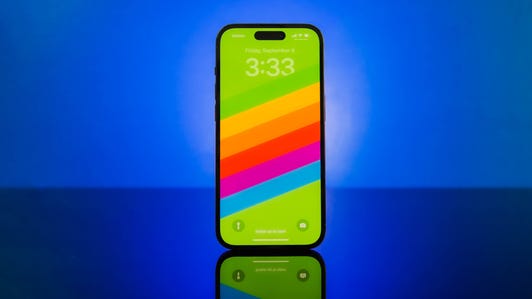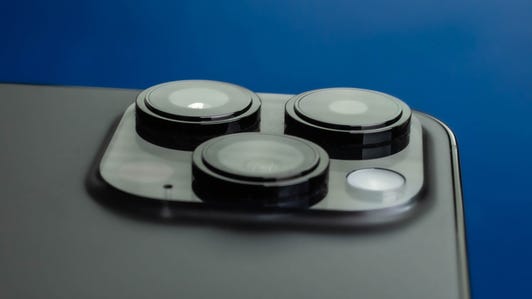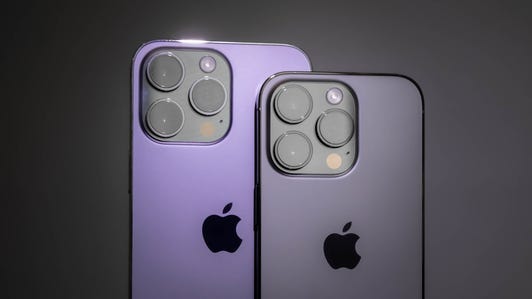We’ve been really impressed by the cameras on the Pixel 7 Pro, iPhone 14 Pro and Galaxy S22 Ultra. The Pixel 7 Pro’s zoom skills even gave the Galaxy S22 Ultra a run for its money, as well as offering some genuine competition to a professional DSLR. But how do these top phones perform when things go dark?
All three phones pack impressive nighttime shooting modes, which let you capture bright and clear shots even in almost total darkness. I’ve done some night mode testing on the phones already as part of the main Pixel 7 Pro review, but I wanted to spend a bit more side-by-side time with all three phones to see which one truly takes the best-looking images at night.
So I charged them up, put on my winter coat and headed out into the cold and dark streets of the Edinburgh suburb of Leith, Scotland. All images were taken in JPEG format, with the main cameras (unless otherwise stated) and using the dedicated night modes on both the Pixel 7 Pro and Galaxy S22 Ultra. The iPhone 14 Pro‘s mode kicks in automatically, so I simply made sure it was active when taking photos.
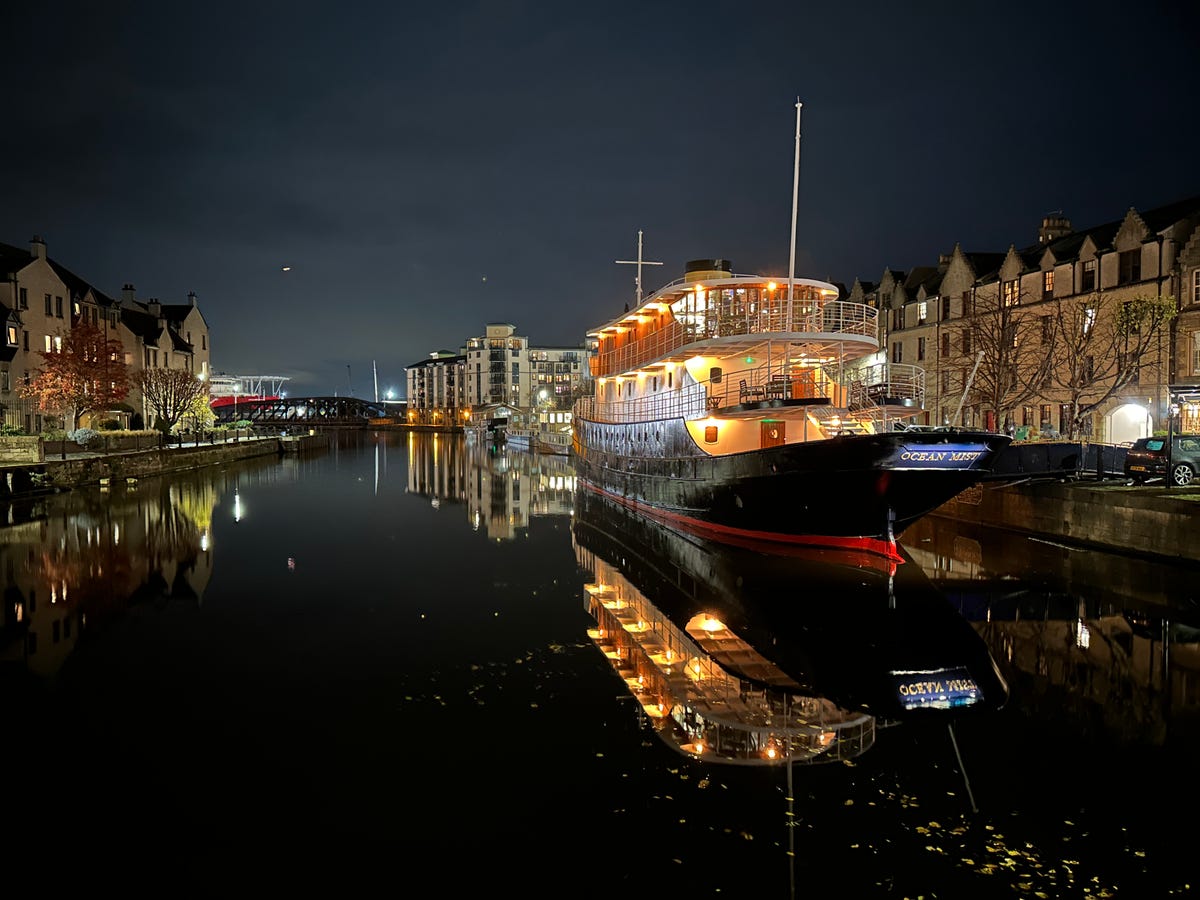

iPhone 14 Pro
Andrew Lanxon/CNET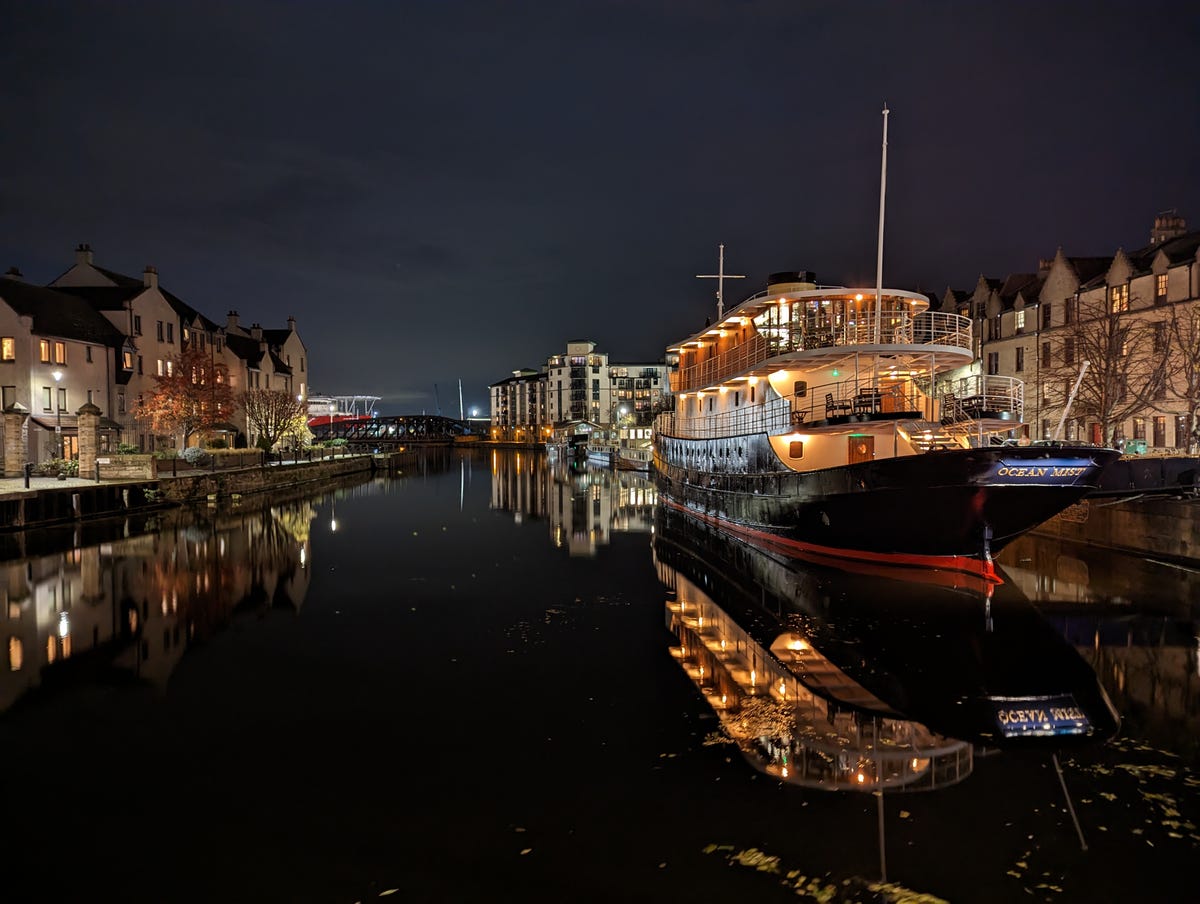

Pixel 7 Pro
Andrew Lanxon/CNET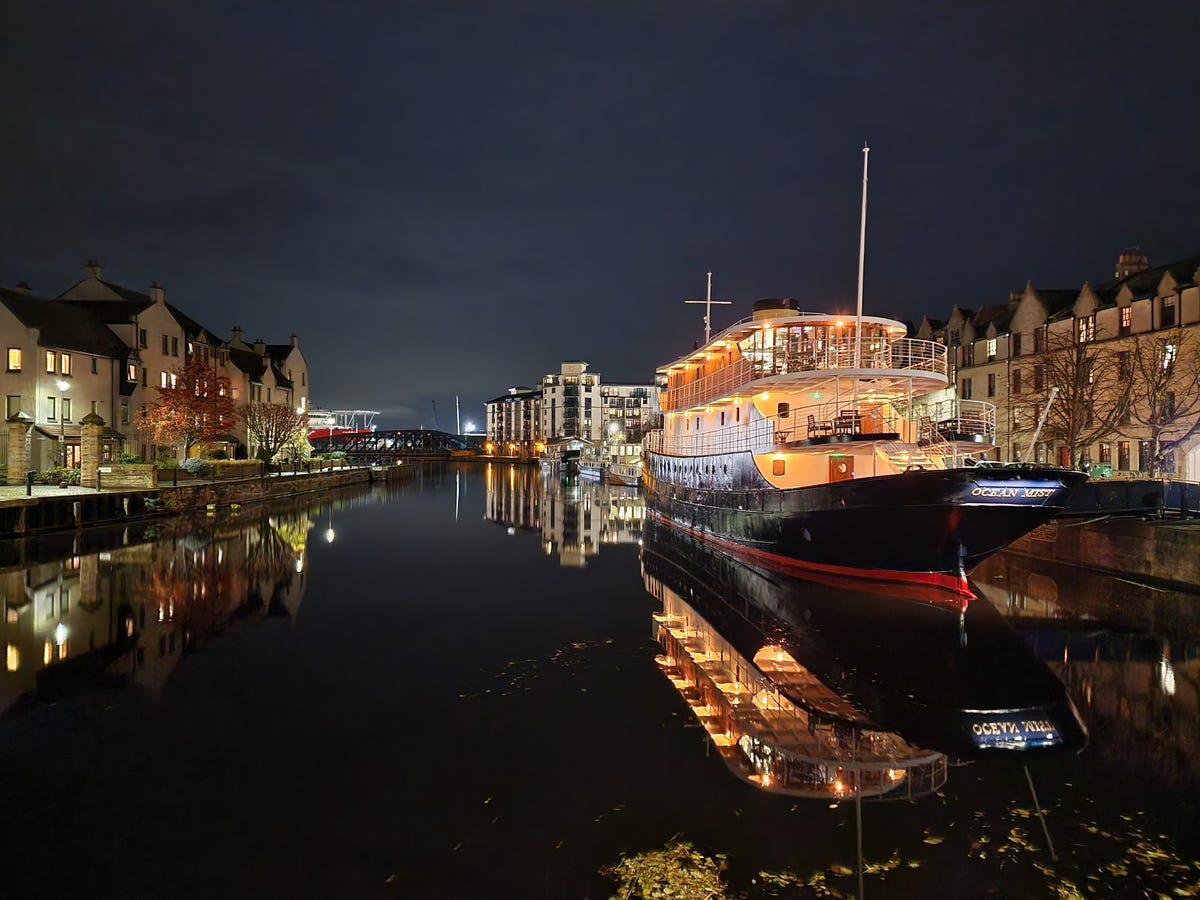

Galaxy S22 Ultra
Andrew Lanxon/CNETThis first test above isn’t a great start for the Pixel 7 Pro. Its shot is darker than its rivals, with quite grungy details on the boat itself.
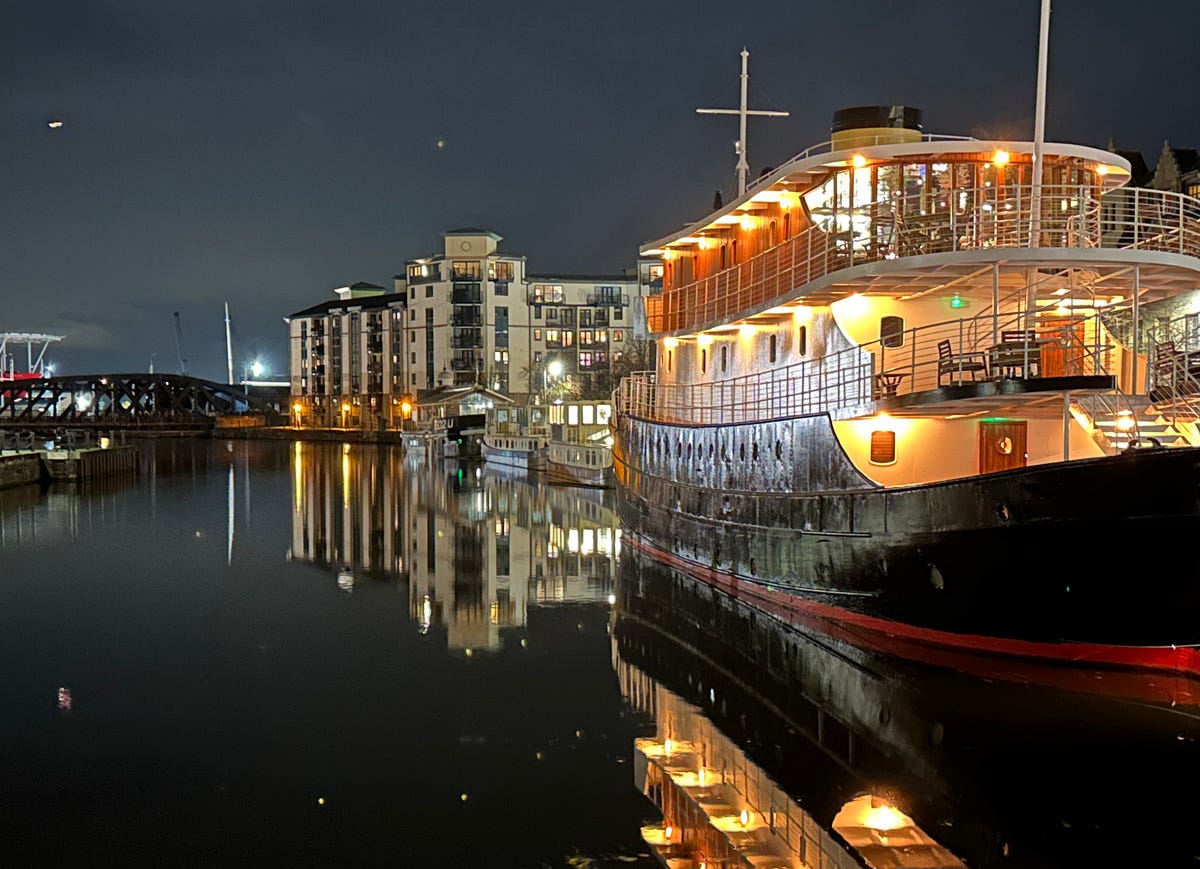

iPhone 14 Pro, 100% crop
Andrew Lanxon/CNET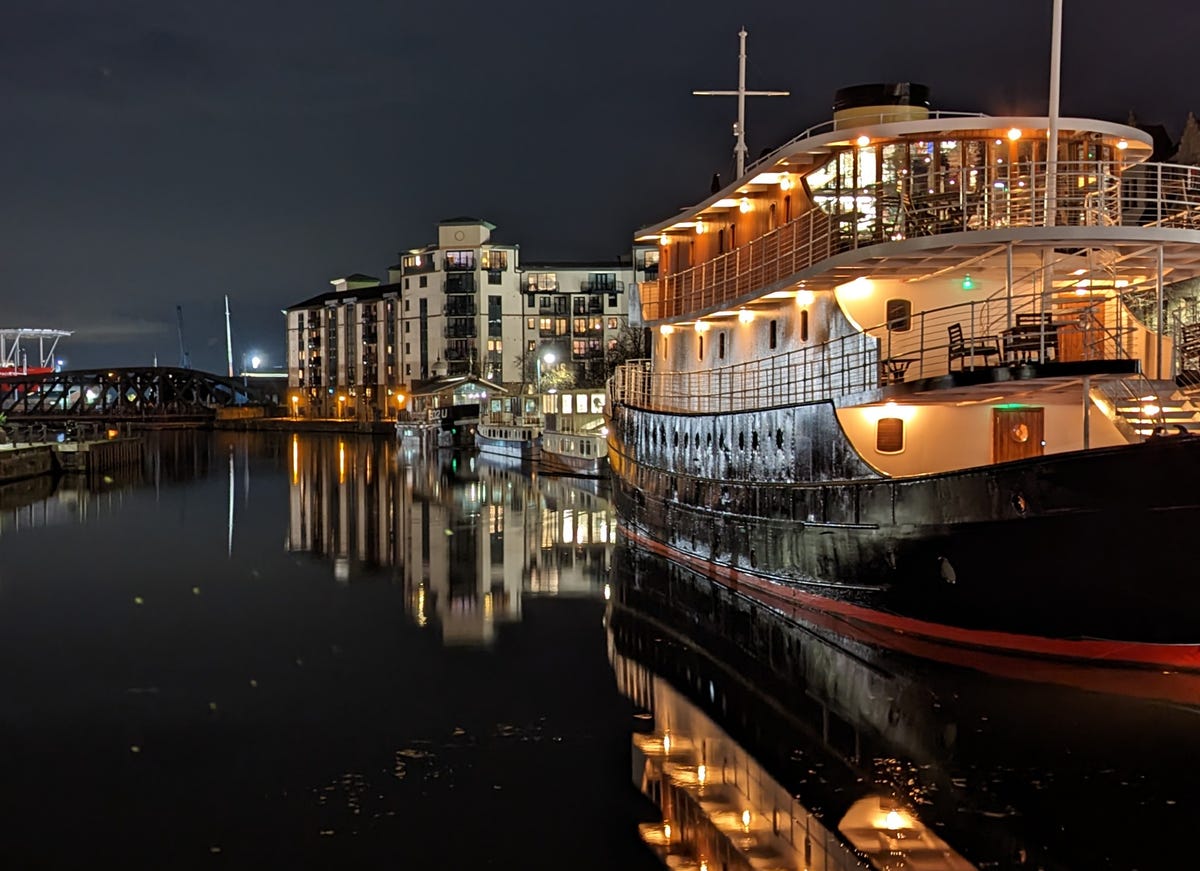

Pixel 7 Pro, 100% crop
Andrew Lanxon/CNET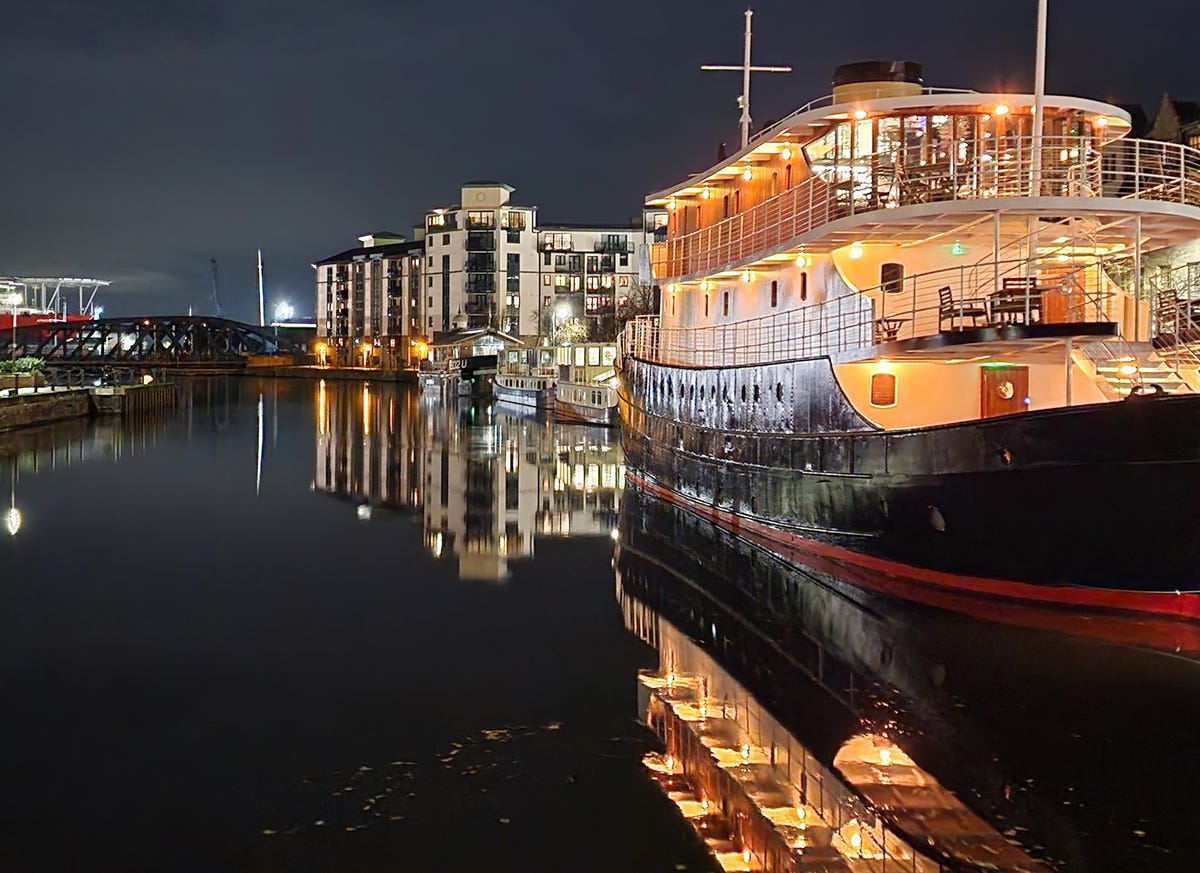

Galaxy S22 Ultra, 100% crop
Andrew Lanxon/CNETZooming in to 100% on the same shots above, it’s clear that both the iPhone 14 Pro and Galaxy S22 Ultra achieved crisper, more balanced images. Between the two, the S22 Ultra did a better job at capturing more natural color tones and its shot wasn’t affected by reflected lights in its lens — something much more noticeable in the iPhone’s shot.


iPhone 14 Pro
Andrew Lanxon/CNET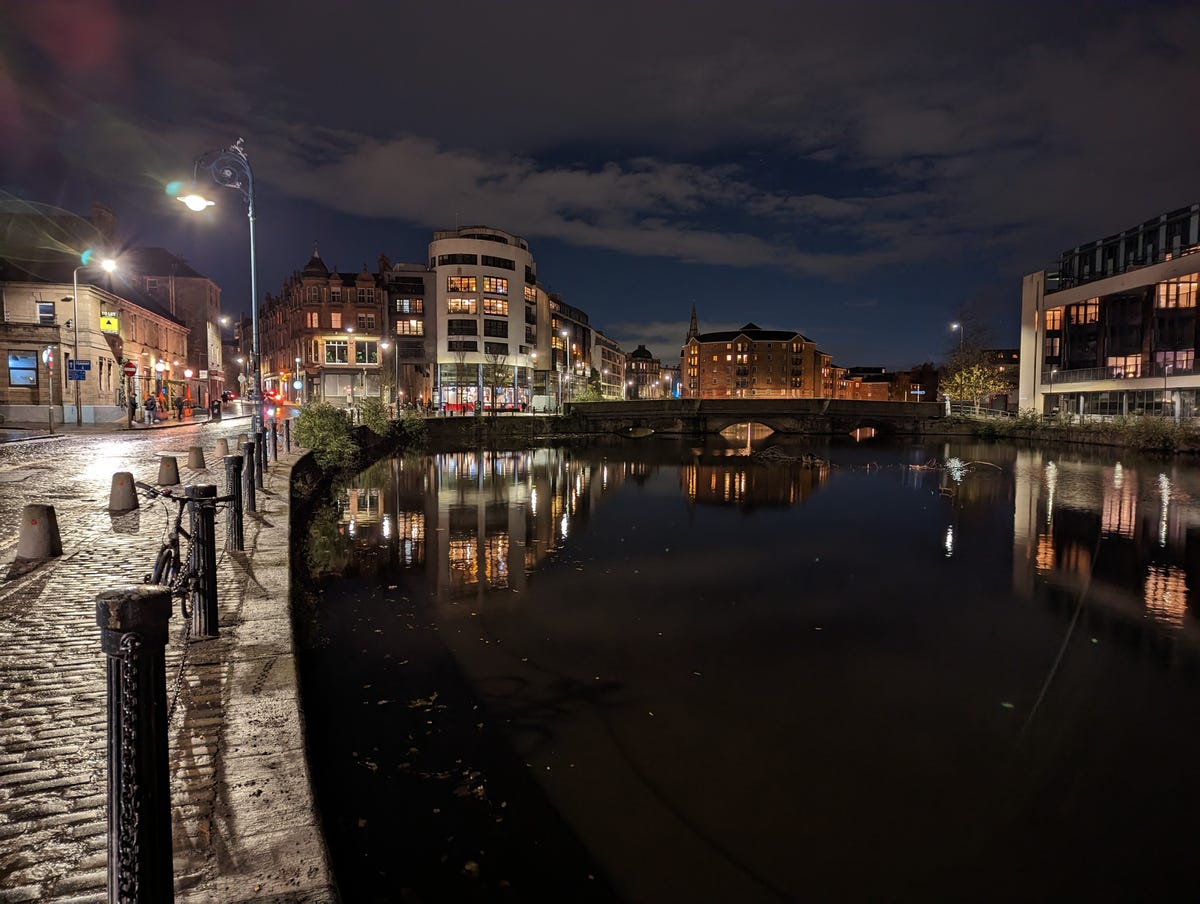

Pixel 7 Pro
Andrew Lanxon/CNET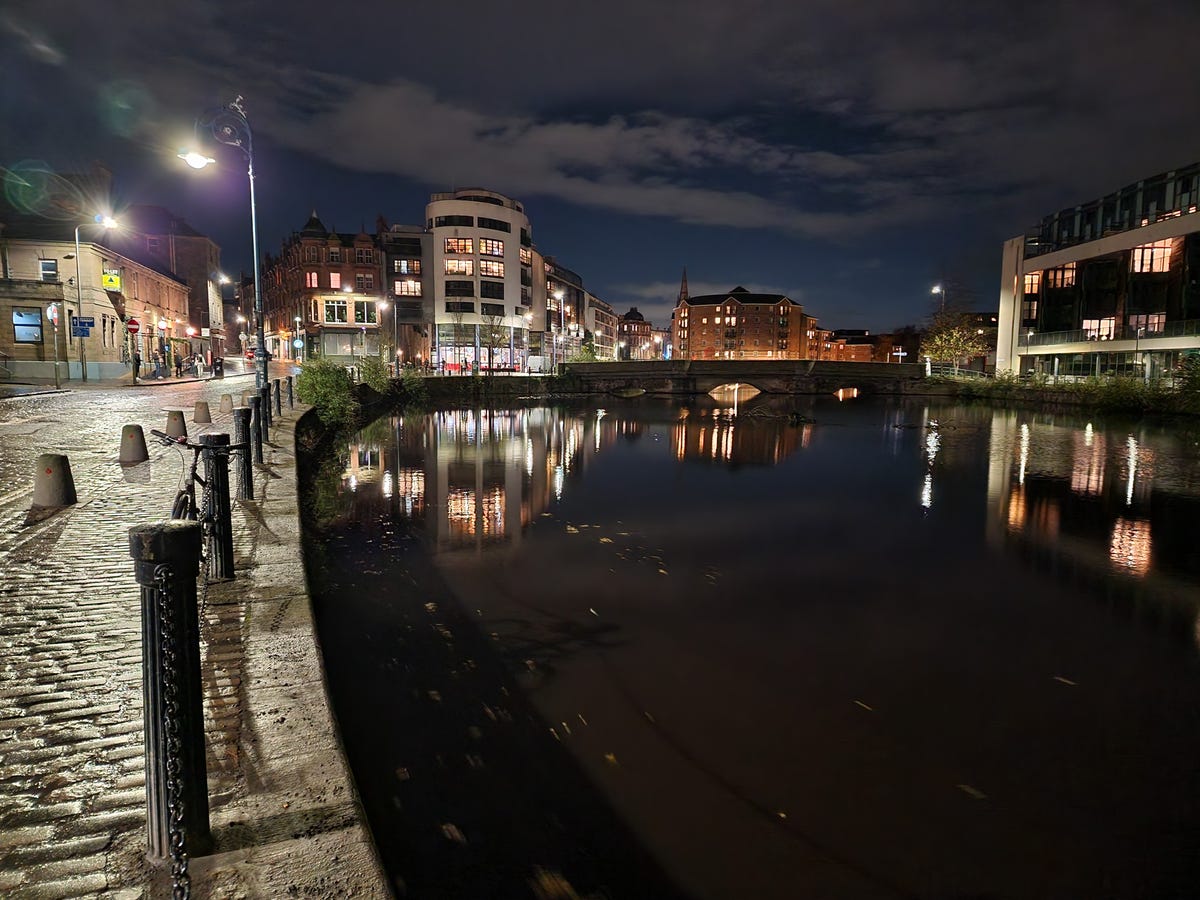

Galaxy S22 Ultra
Andrew Lanxon/CNETThe Pixel 7 Pro did a much better job in the river scene above, with an excellent exposure across the whole image and tons of details visible on buildings in the distance. All three phones captured the scene well, with sharp details and minimal image noise. The iPhone’s image is a bit more contrasty, which I don’t dislike, but it makes the shot look a touch darker as a result.
One thing to note on the Pixel’s shot however is the noticeable lens flare from the streetlight on the left side of the image. While all three phones suffer from flare to an extent, it’s noticeably worse on the Pixel’s image, which is something I’d found on my initial tests for the review. Some shots I took had flares so prominent they ruined the image, and it’s something that you’ll need to keep in mind with bright light sources.
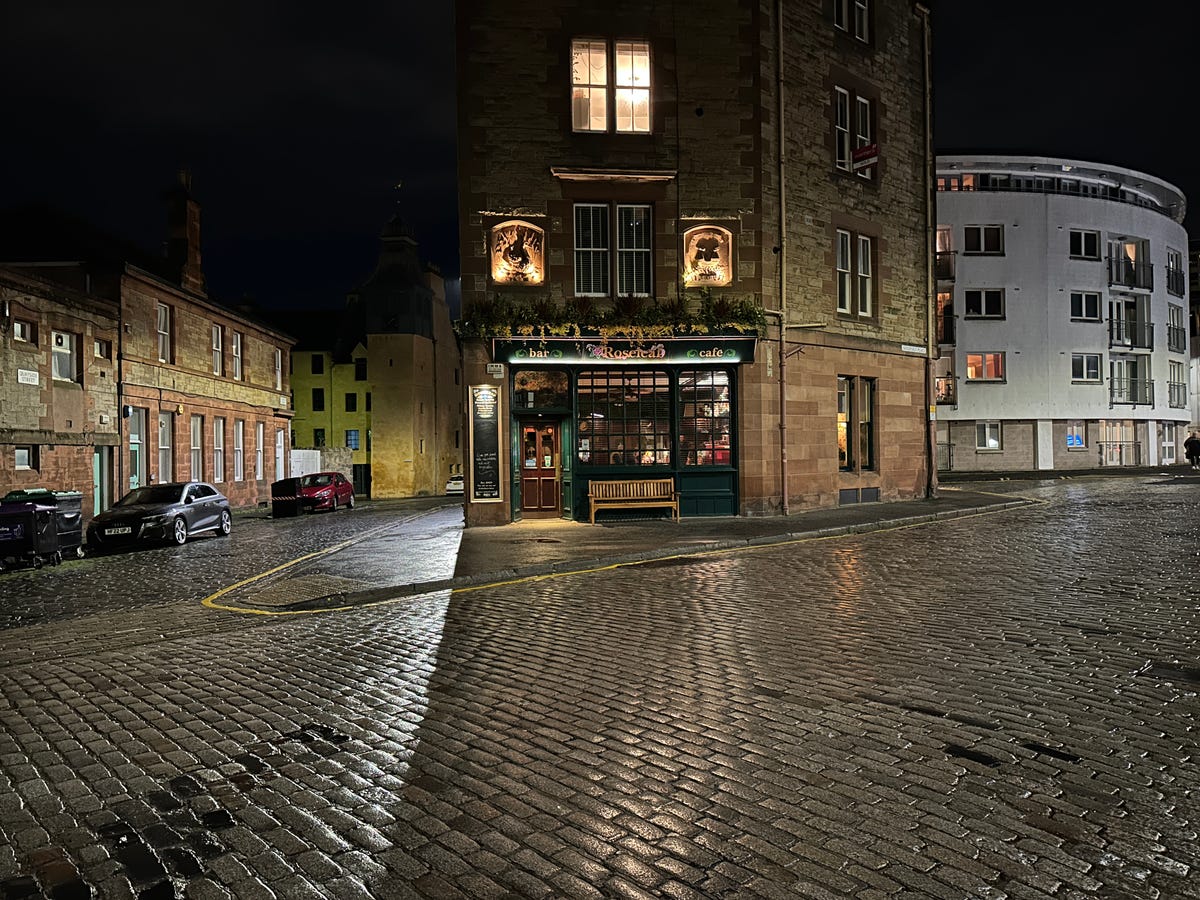

iPhone 14 Pro
Andrew Lanxon/CNET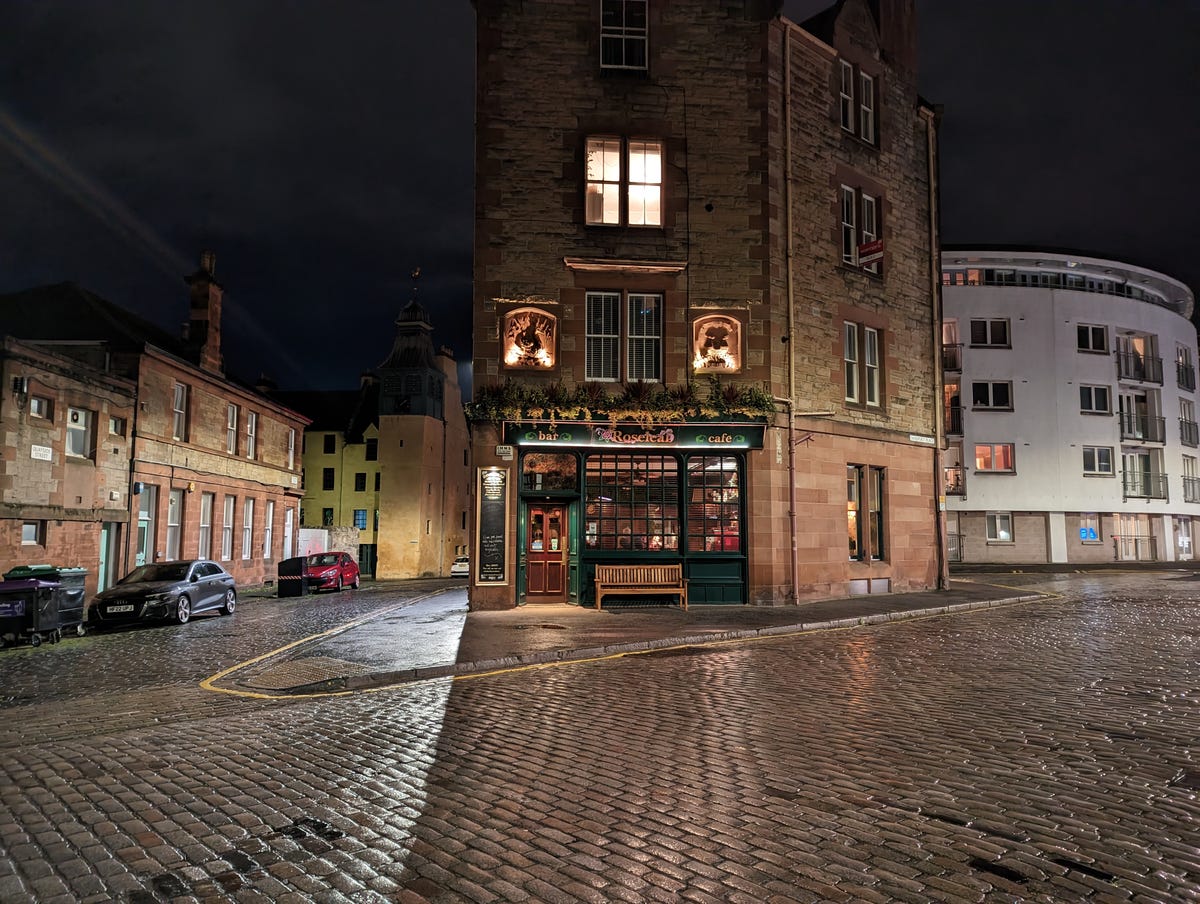

Pixel 7 Pro
Andrew Lanxon/CNET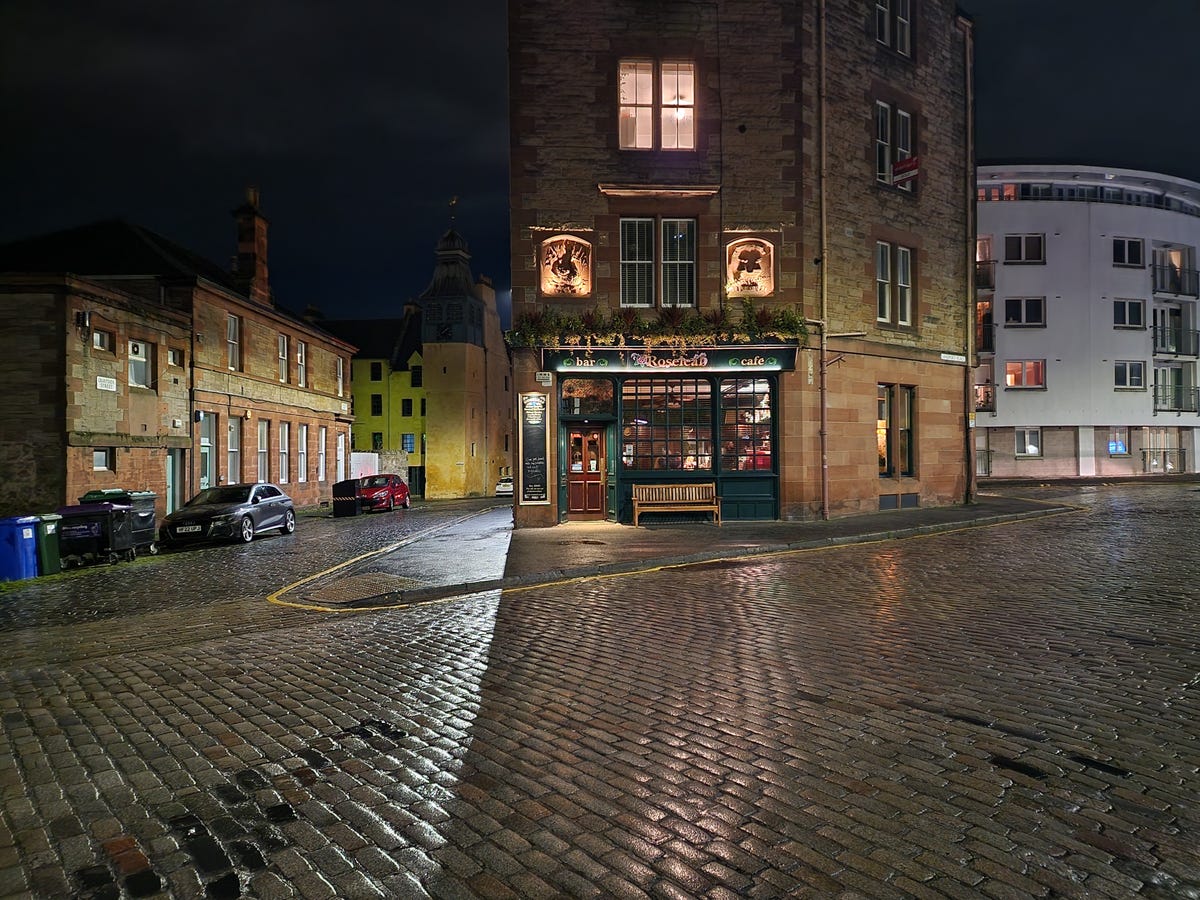

Galaxy S22 Ultra
Andrew Lanxon/CNETAll three phones captured the old pub front above well, with excellent exposures across the board. I’m impressed at how they’ve all captured lots of detail in the shadowy areas of the images, yet managed to balance the bright highlights in the window and on the carvings well.
As with the earlier image of the boat, the iPhone 14 Pro’s shot leans toward a yellow-tinged white balance, which doesn’t look quite as realistic as the Galaxy S22 Ultra’s shot. The Pixel went a little far the other way, with a more magenta-toned image.
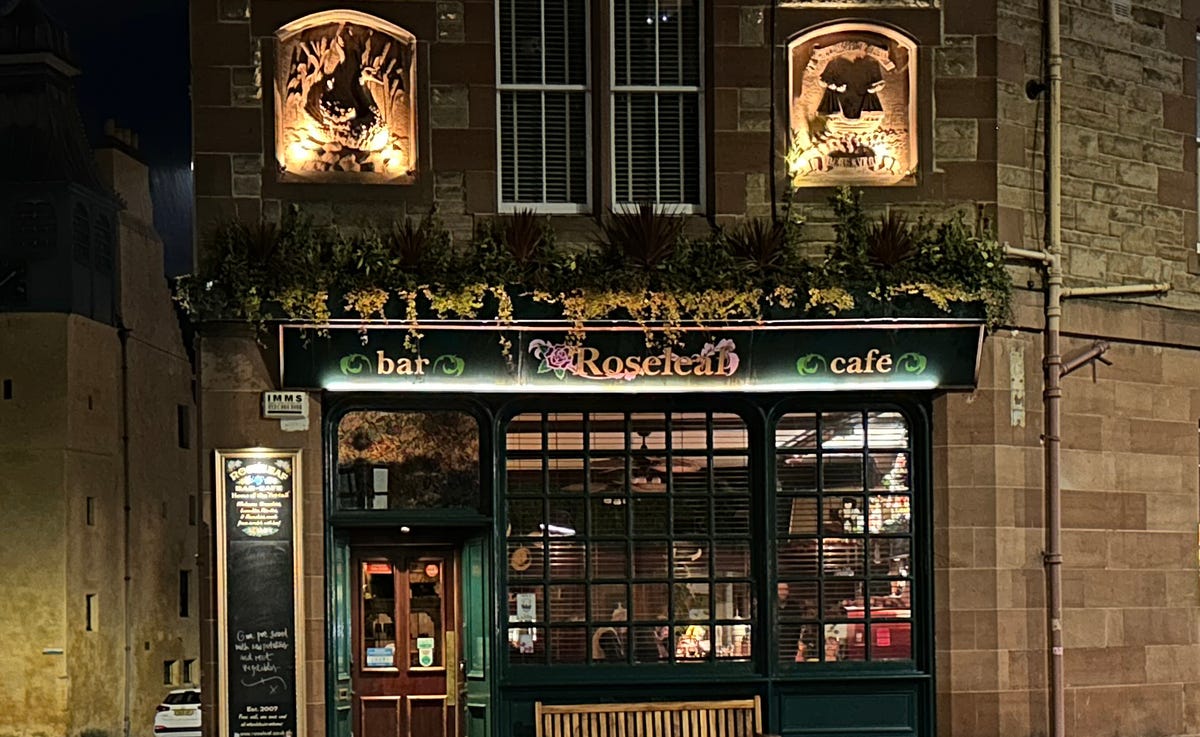

iPhone 14 Pro, 100% crop
Andrew Lanxon/CNET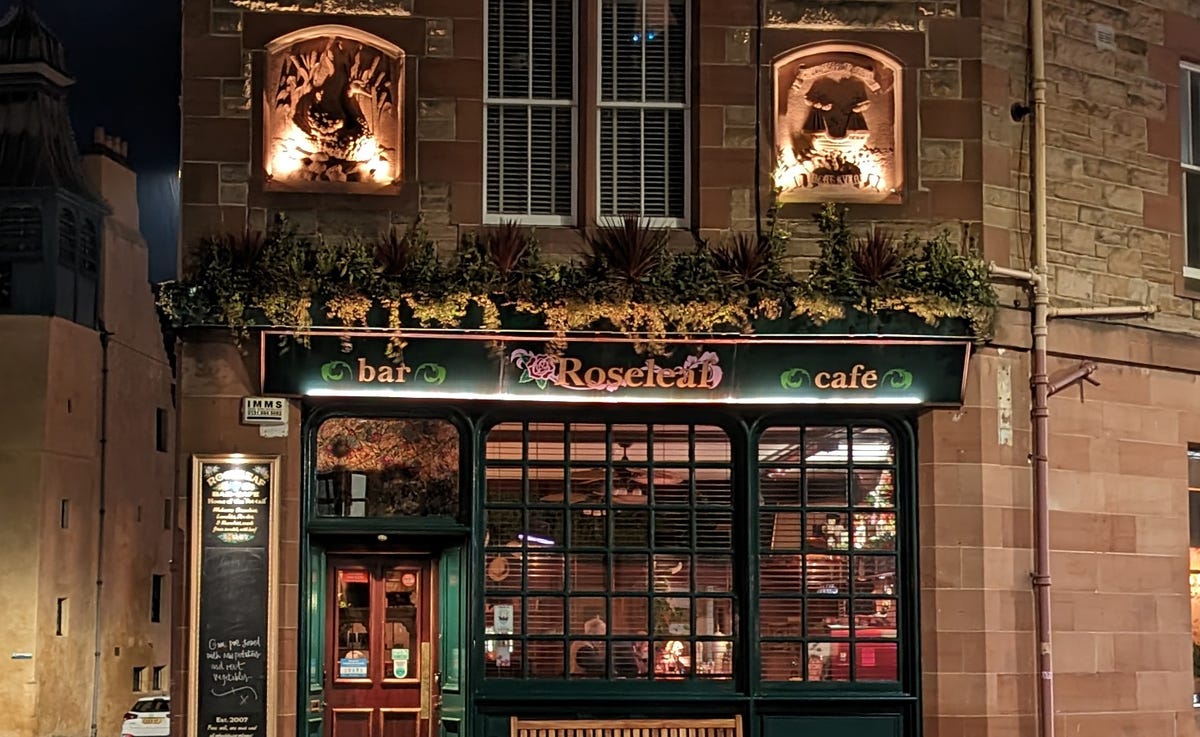

Pixel 7 Pro, 100% crop
Andrew Lanxon/CNET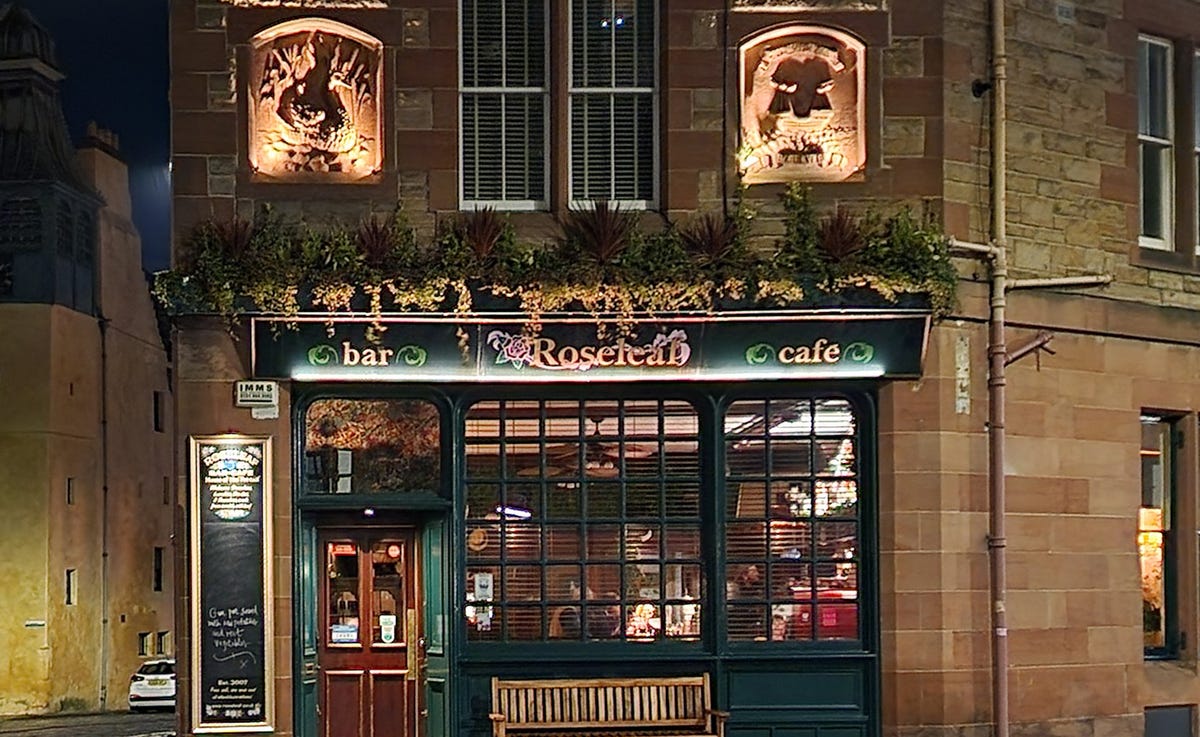

Galaxy S22, 100% crop
Andrew Lanxon/CNETZooming in to 100% on the same images and things switch around. It’s very marginal, but the Pixel 7 Pro achieved a slightly sharper image than its rivals, with the iPhone following close behind and the S22 Ultra bringing up the rear. I have to pixel peep at this point though, and even then the difference is almost negligible. At full screen, all three images are pin-sharp and look great.
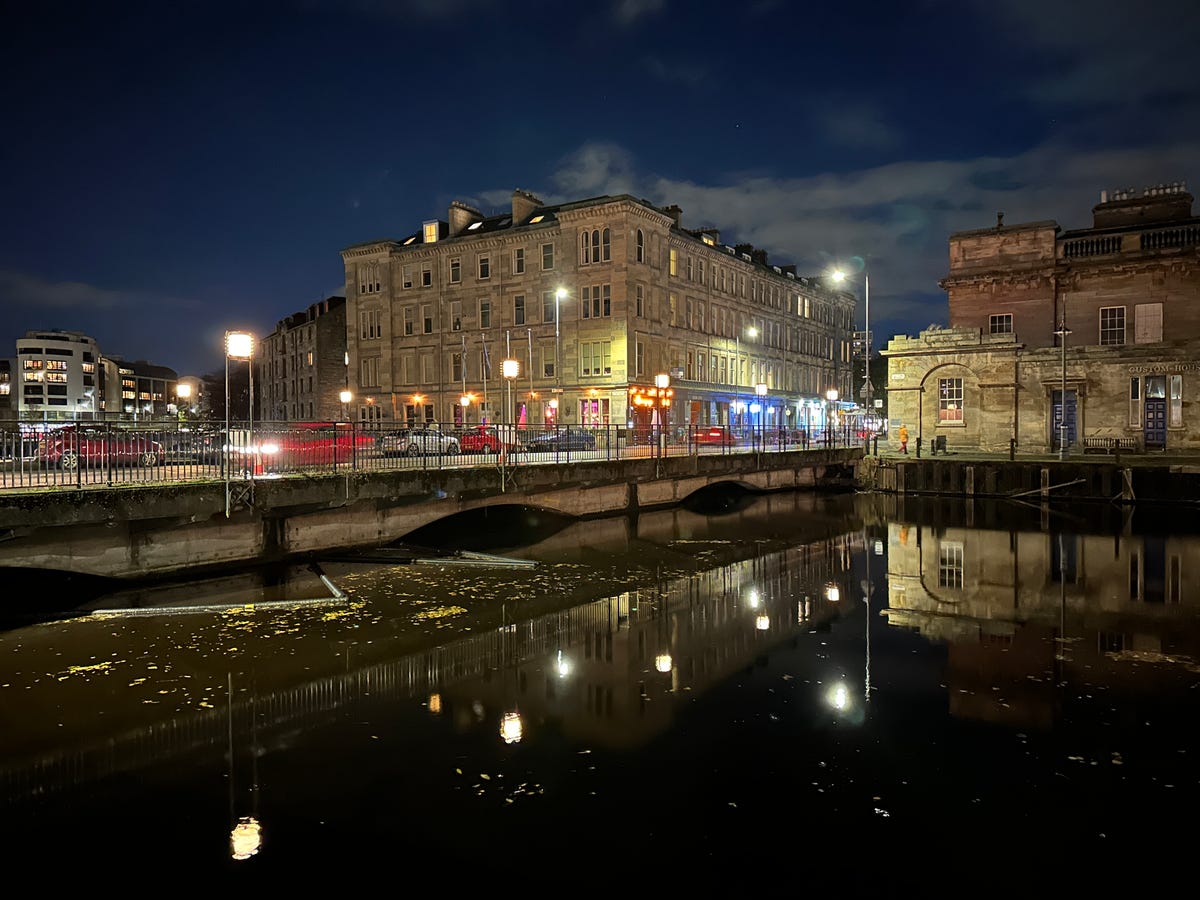

iPhone 14 Pro
Andrew Lanxon/CNET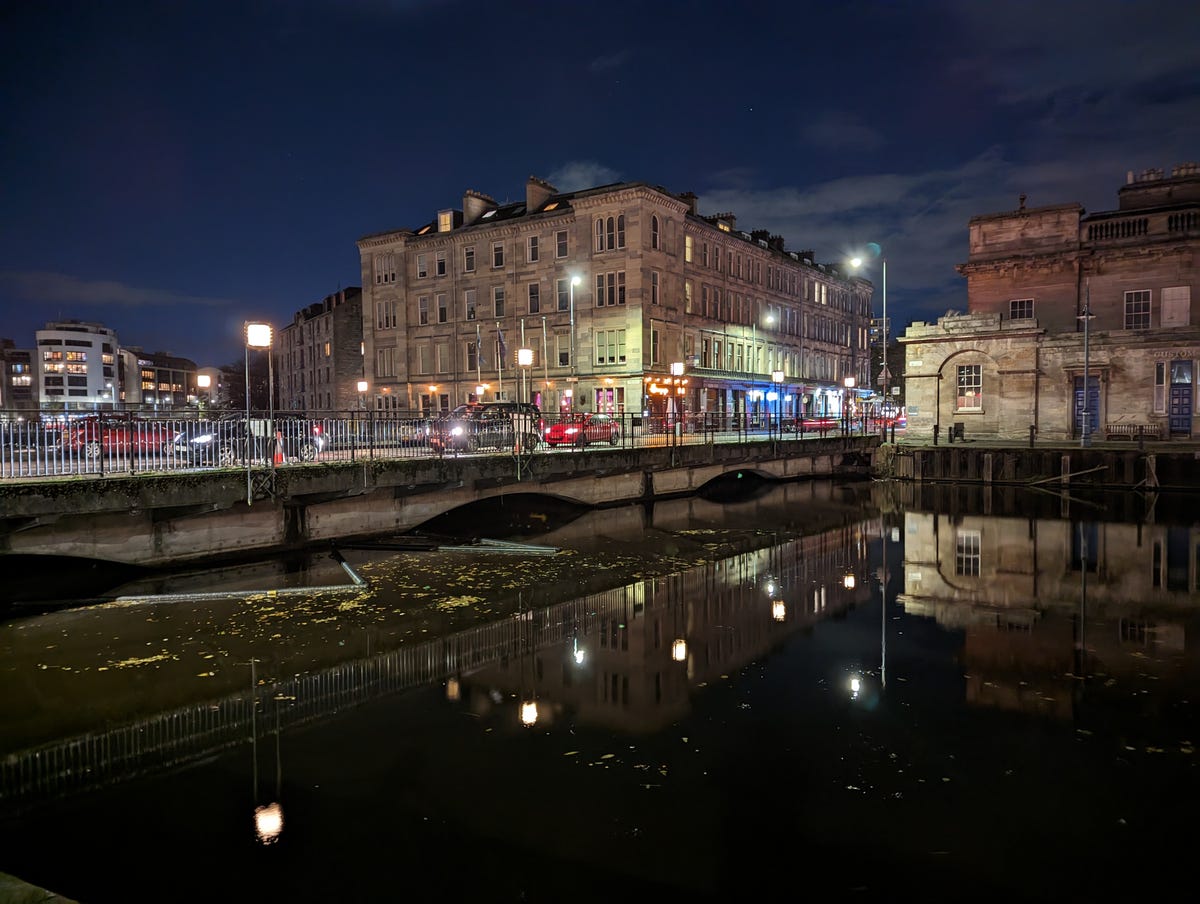

Pixel 7 Pro
Andrew Lanxon/CNET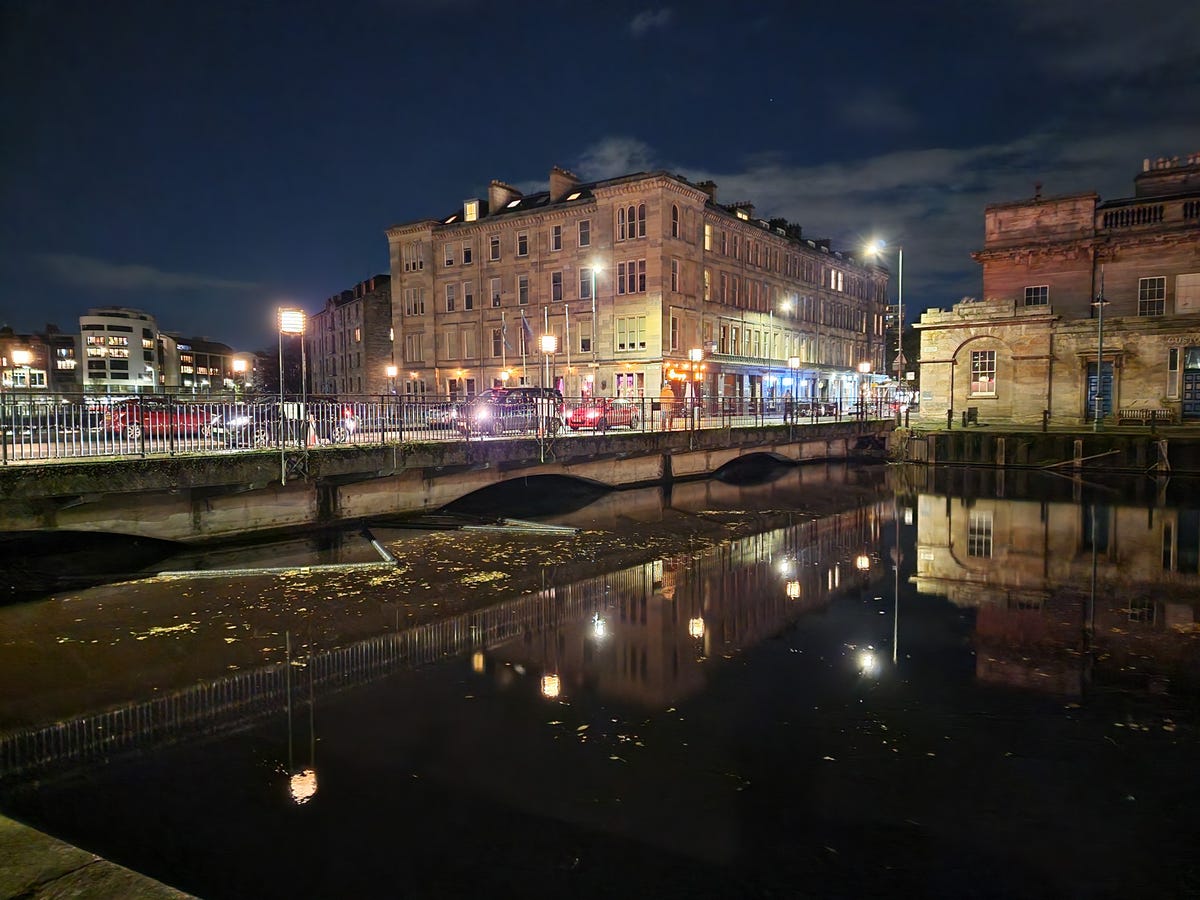

Galaxy S22 Ultra
Andrew Lanxon/CNETThe scene above works to summarize the approach the three phones take. The iPhone’s image has a more yellowy white balance which isn’t particularly realistic. The Pixel 7 Pro’s shot is a little darker and more magenta-toned, while the S22 Ultra’s shot seems to strike a better balance between the two with excellent exposure and more even colors.
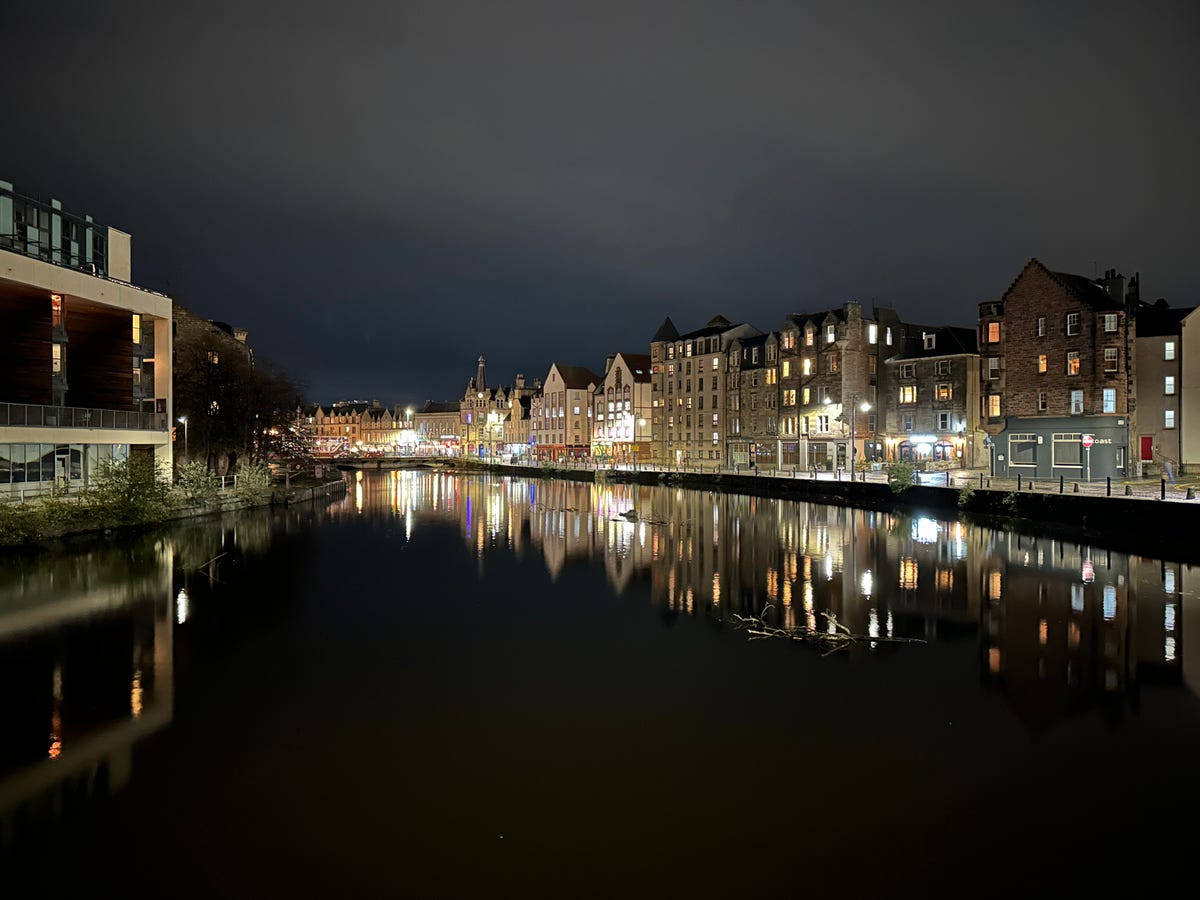

iPhone 14 Pro
Andrew Lanxon/CNET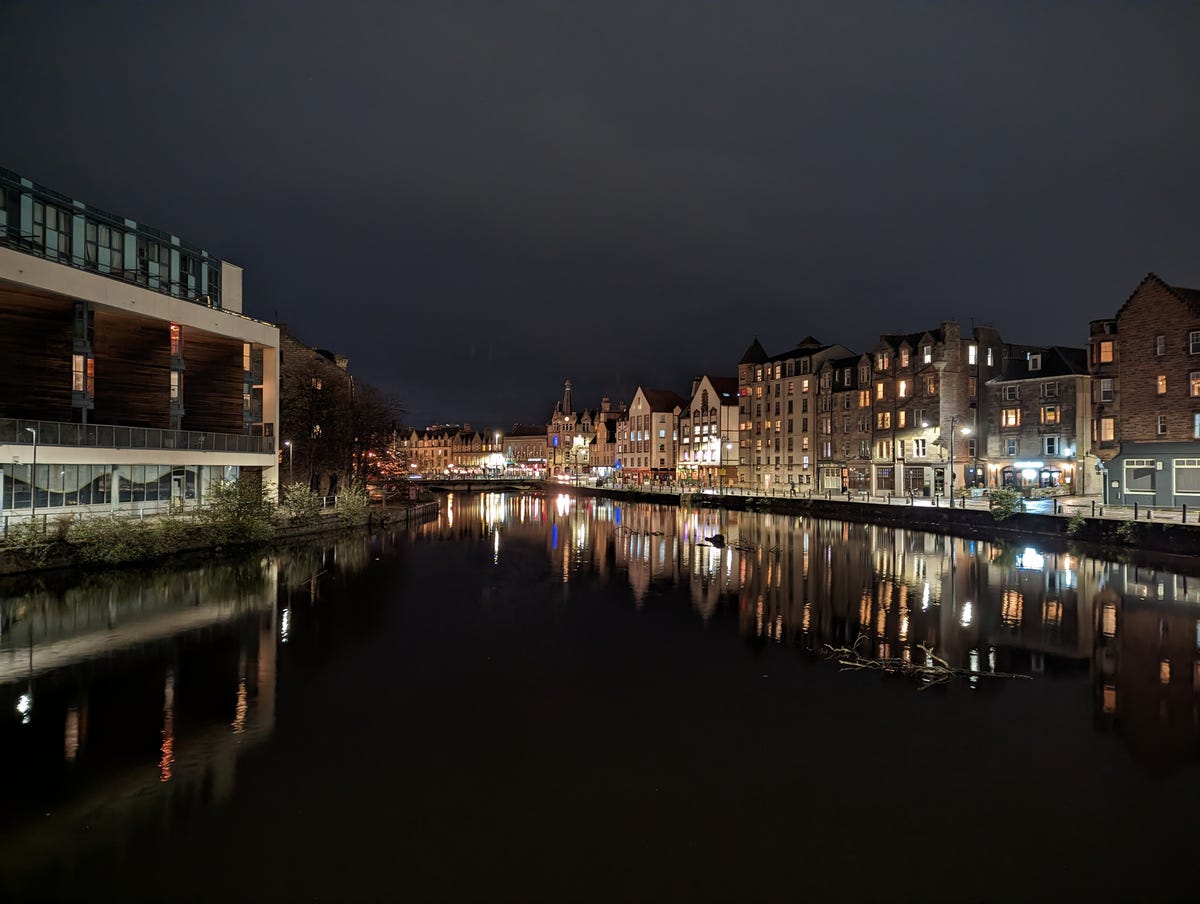

Pixel 7 Pro
Andrew Lanxon/CNET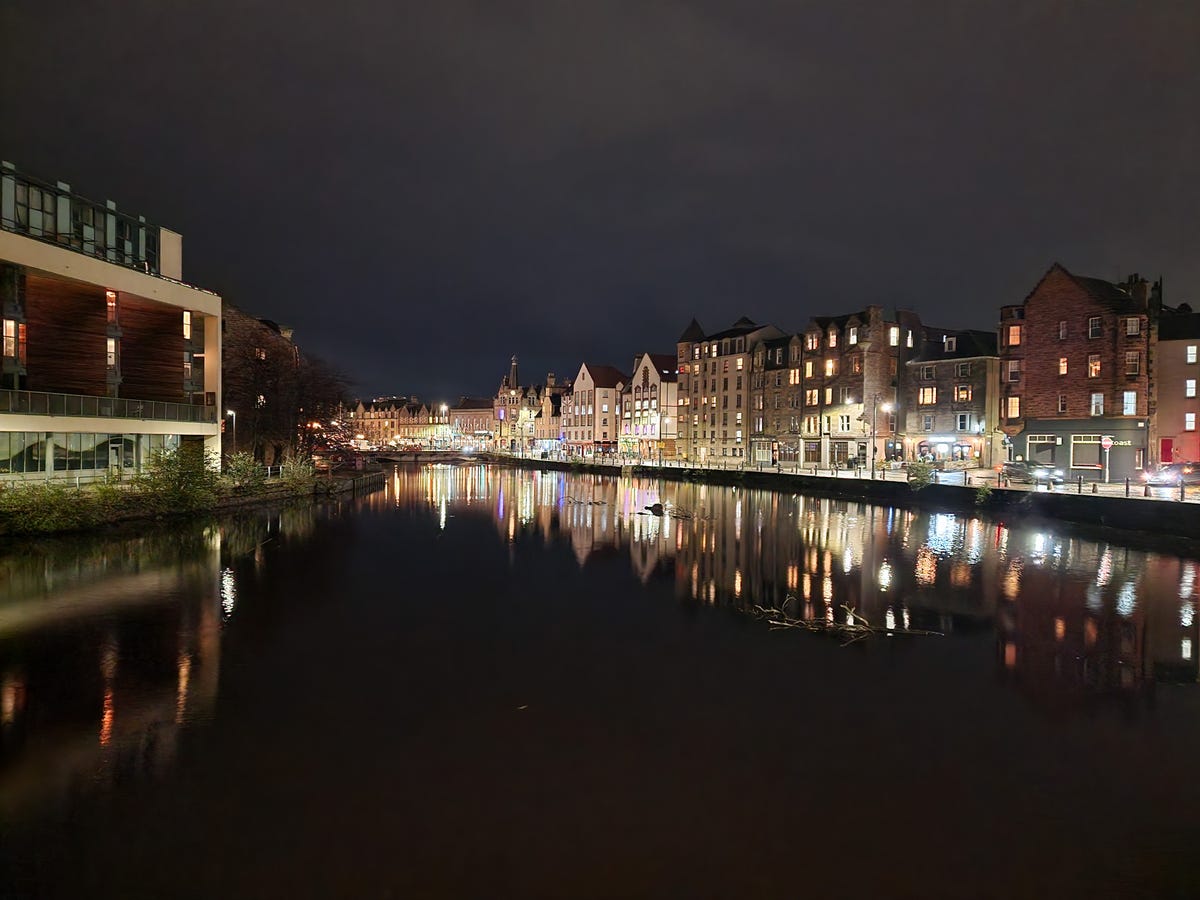

Galaxy S22 Ultra
Andrew Lanxon/CNETBut what about when we use the zoom lenses on these phones? Well, starting off with the standard cameras, all three phones have managed to capture solid images above.
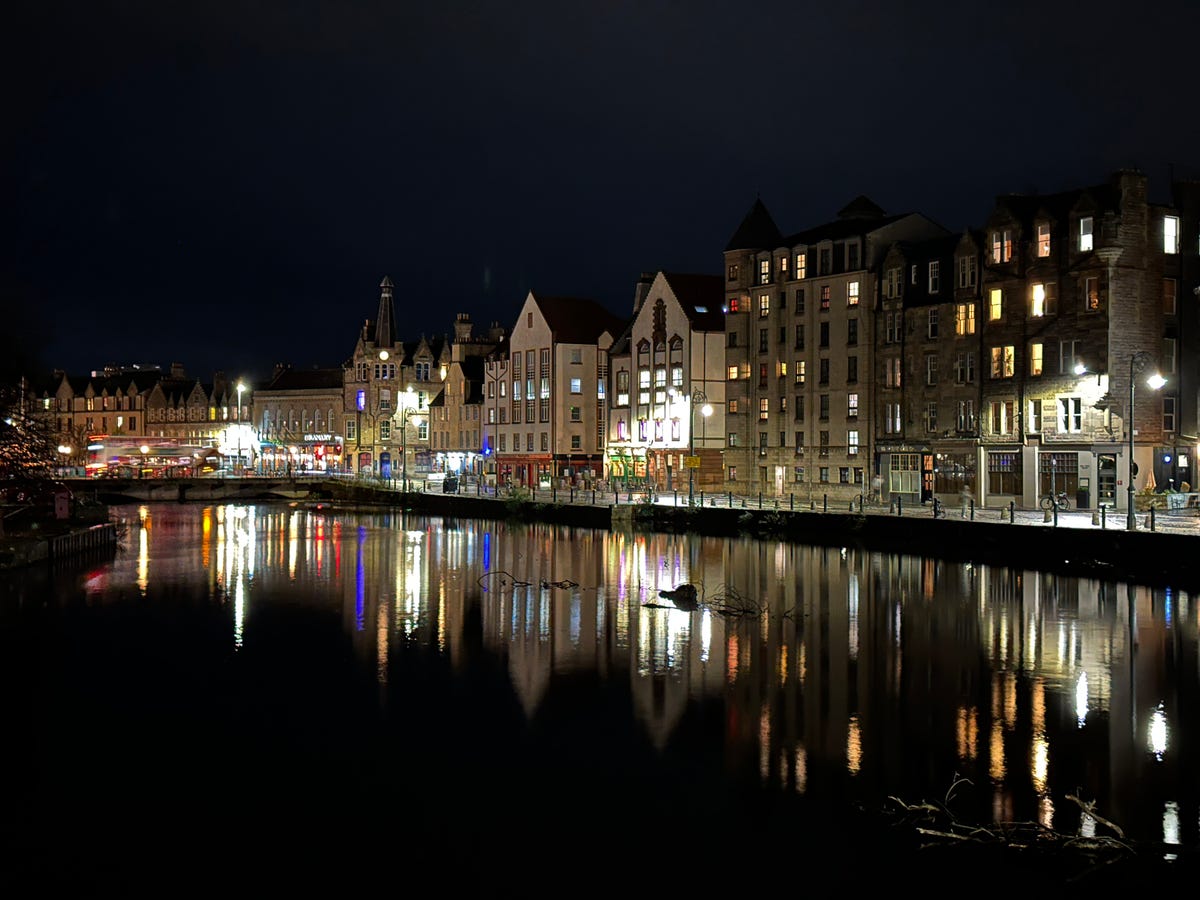

iPhone 14 Pro, 2x zoom
Andrew Lanxon/CNET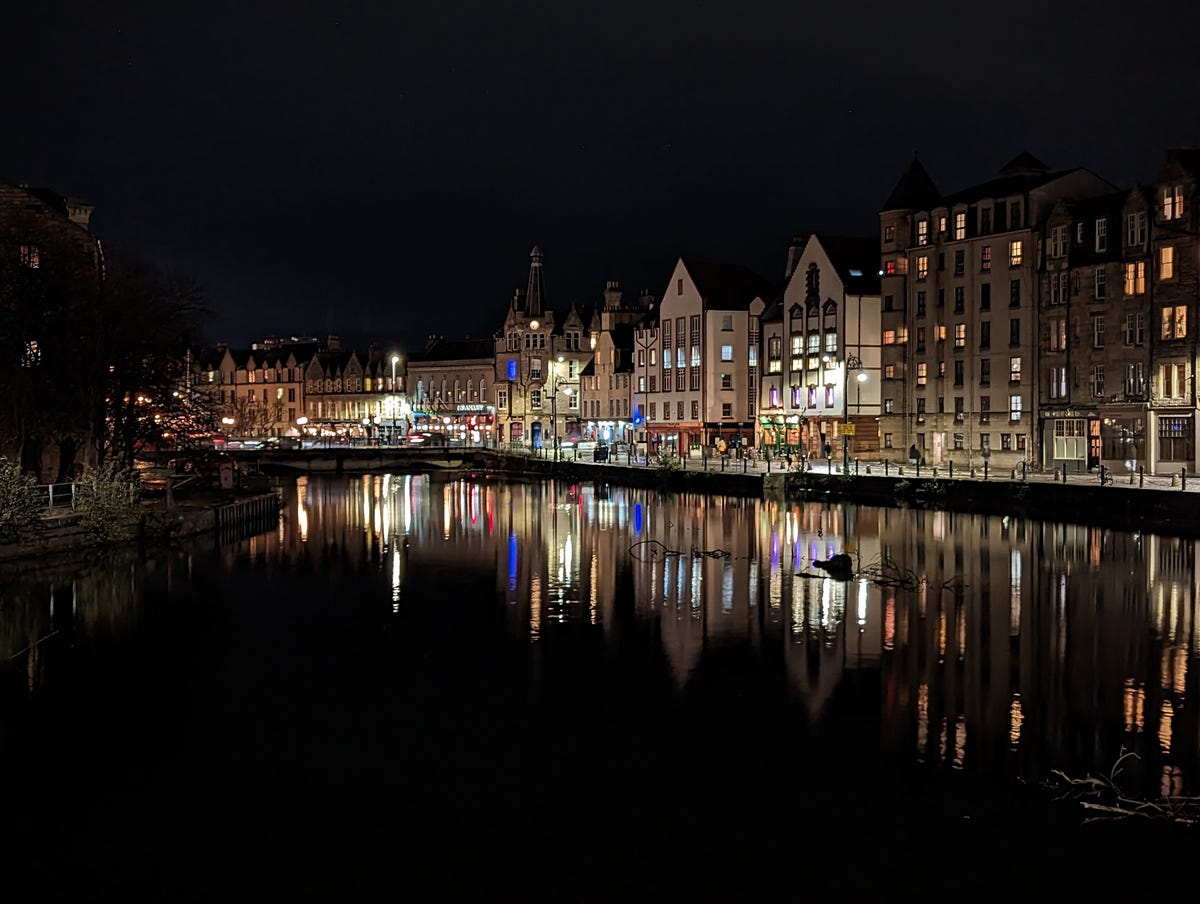

Pixel 7 Pro, 2x zoom
Andrew Lanxon/CNETBoth the iPhone and Pixel offer 2x zoom modes (digitally cropping) and there’s not a huge amount to choose between them in the photos above. The digital crop has noticeably reduced the quality on photos from both phones and while the iPhone’s is a touch sharper, the Pixel’s has slightly better dynamic range, with some of the highlights being less blown out.
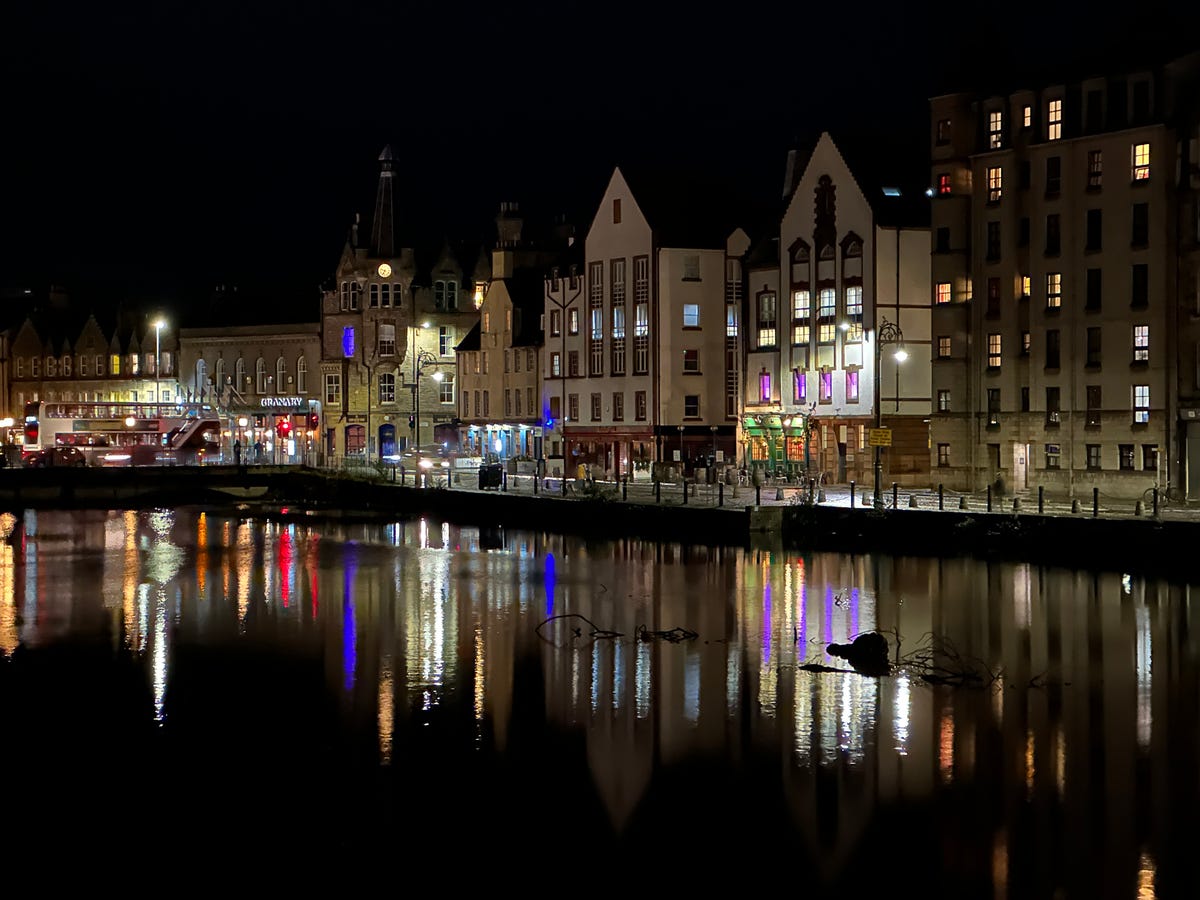

iPhone 14 Pro, 3x optical zoom
Andrew Lanxon/CNET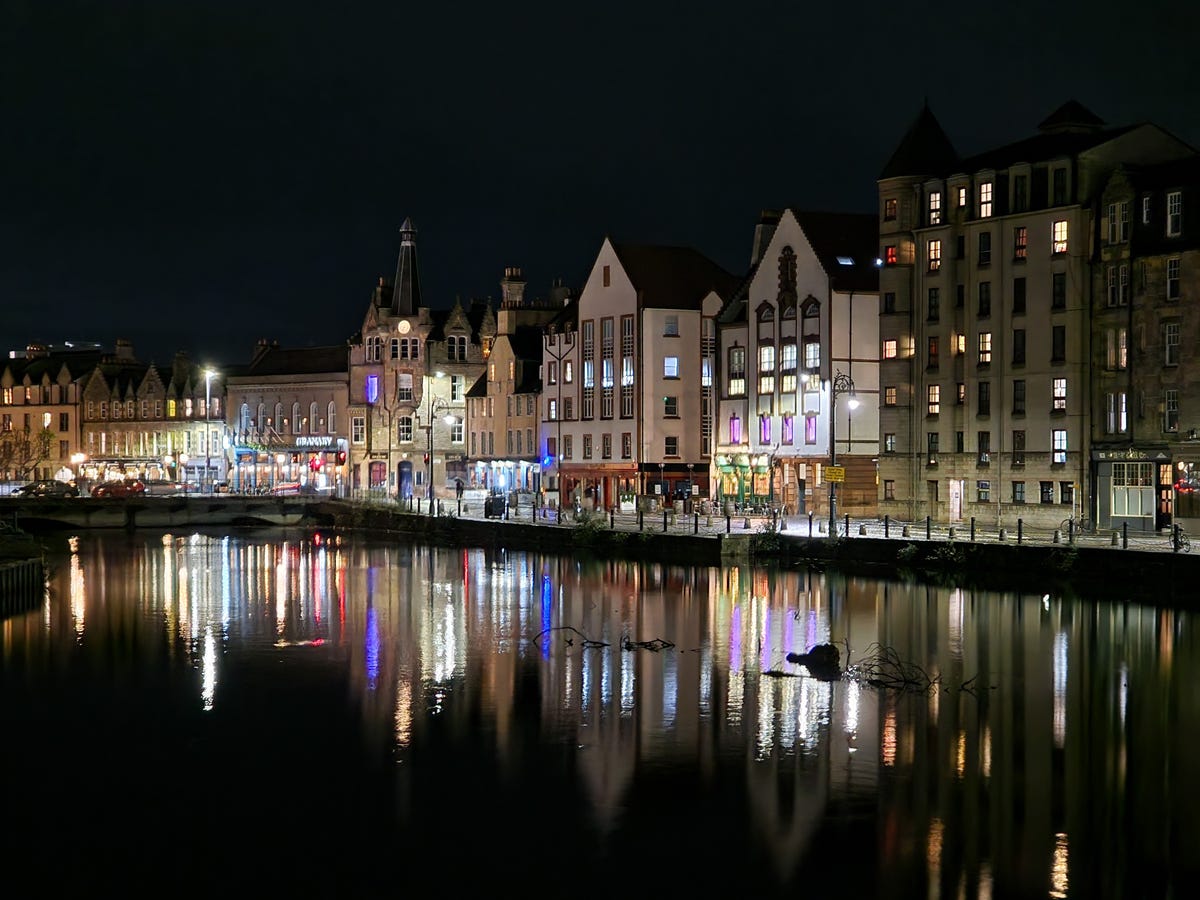

Galaxy S22 Ultra, 3x optical zoom
Andrew Lanxon/CNETAt 3x optical zoom on the iPhone 14 Pro and Galaxy S22 Ultra (the Pixel 7 Pro has a 5x zoom, which I’ll come to), the iPhone’s shot above is noticeably better than its 2x digital zoom shot, with improved details and dynamic range. And although its shot looks a little darker than the S22 Ultra’s, it has sharper, more defined details and a more even dynamic range which results in a better image overall.
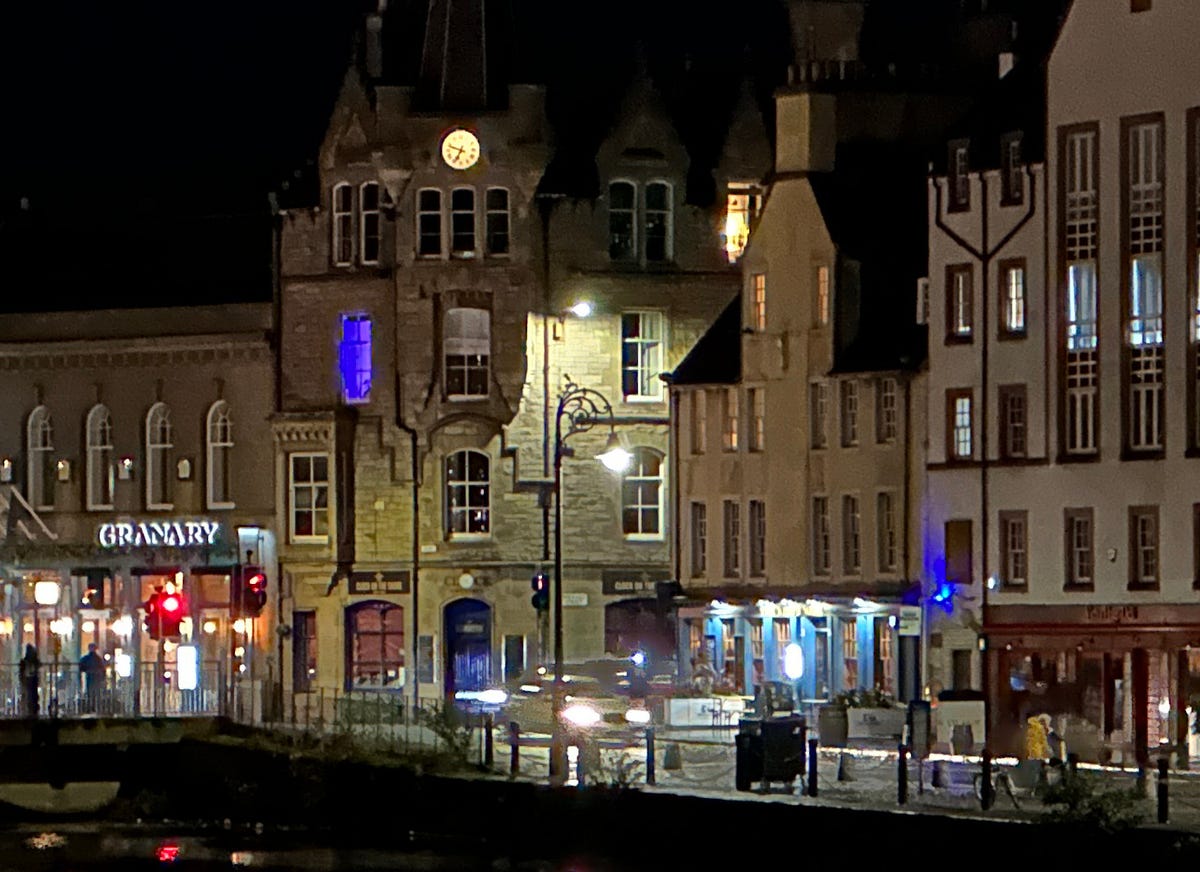

iPhone 14 Pro, 150% crop
Andrew Lanxon/CNET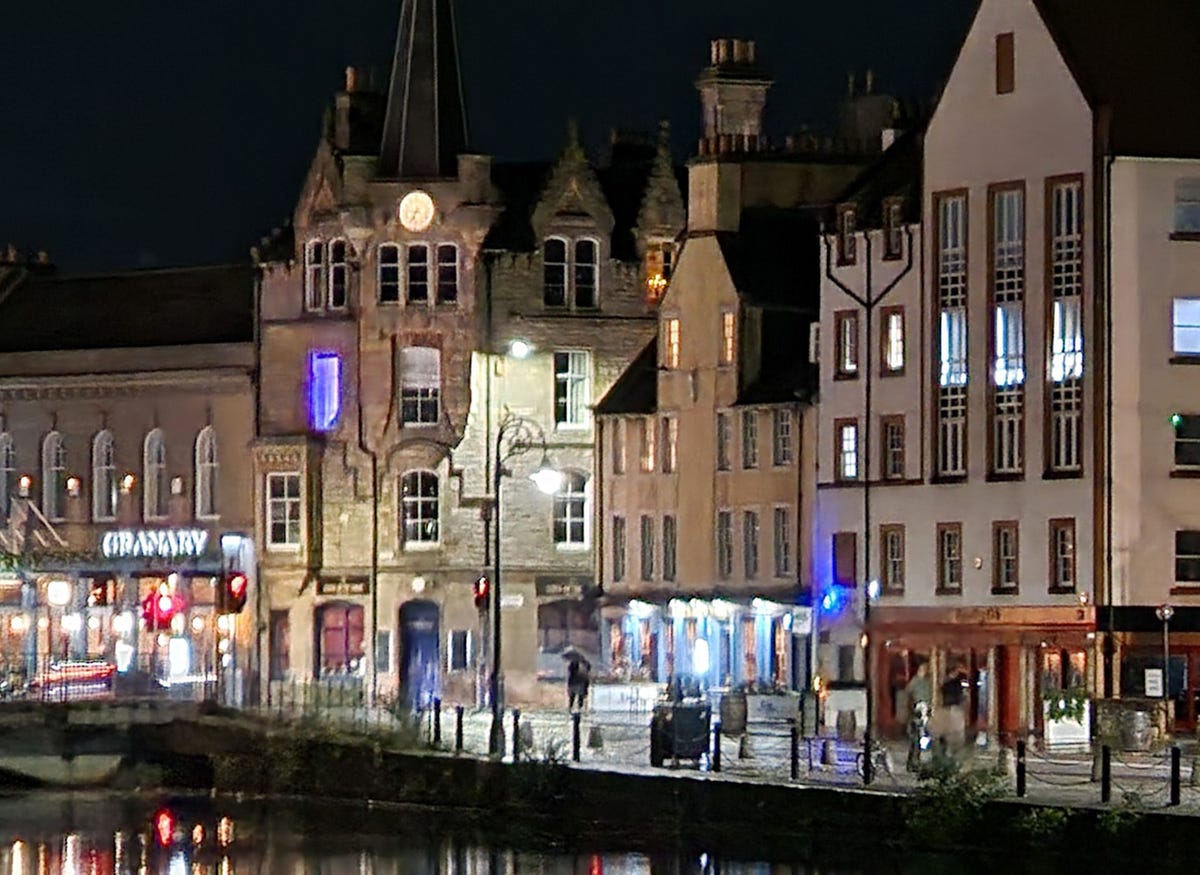

Galaxy S22 Ultra, 150% crop
Andrew Lanxon/CNETZooming right in to 150%, it’s clear that the iPhone’s dynamic range is better (look at the bright clock face in the upper left of the scene) and the details are much sharper.
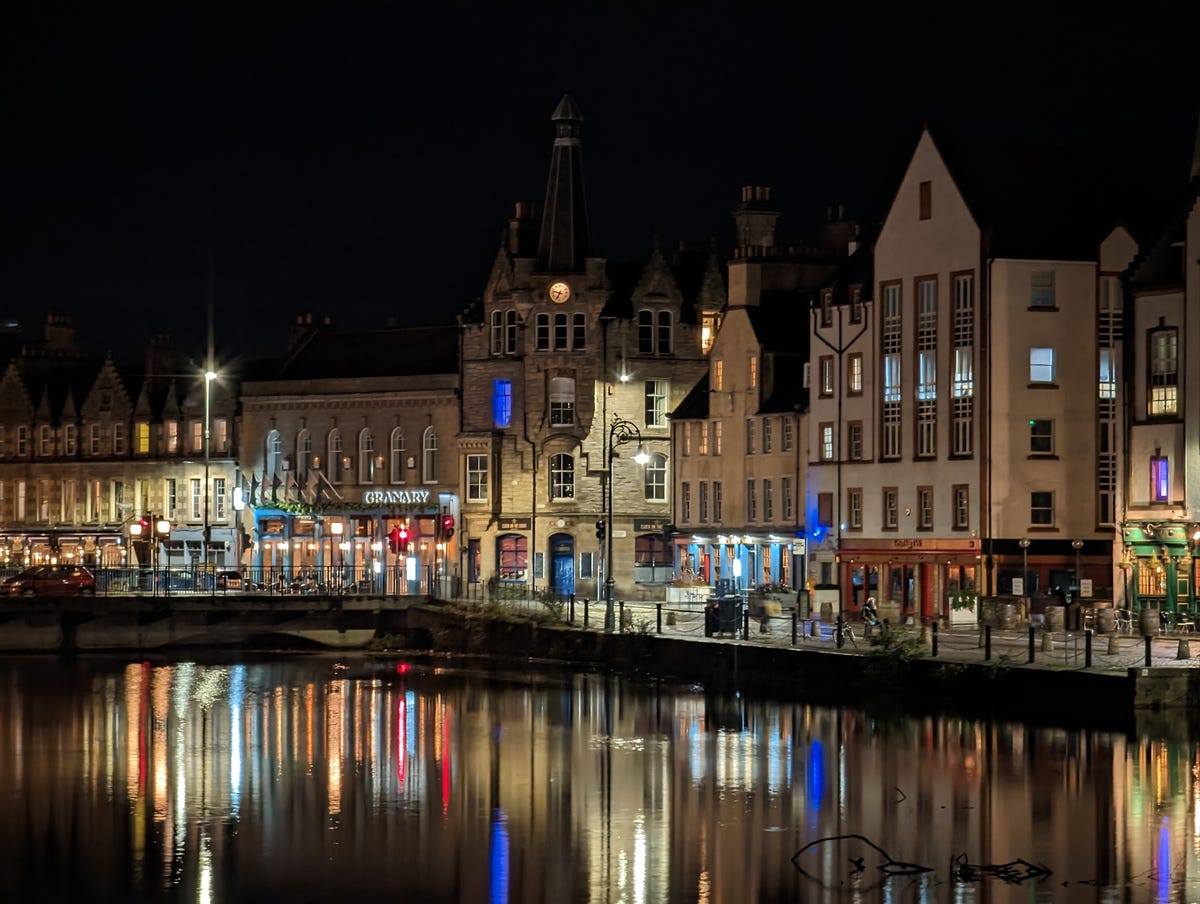

Pixel 7 Pro, 5x optical zoom
Andrew Lanxon/CNET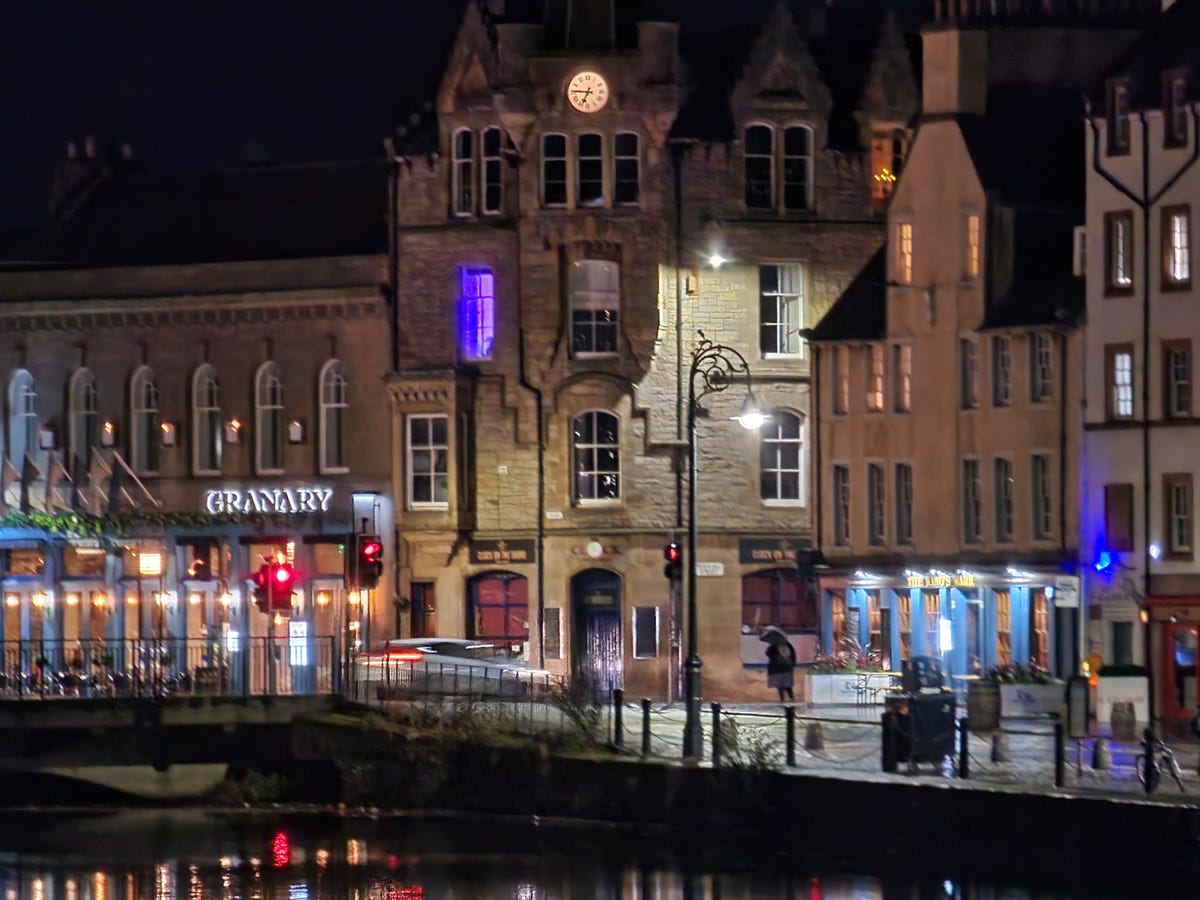

Galaxy S22 Ultra, 10x optical zoom
Andrew Lanxon/CNETThe Pixel 7 Pro and Galaxy S22 Ultra can take their zooms further though, with 5x and 10x optical zooms being offered, respectively. The S22’s image above is obviously a lot more zoomed in, yet it maintains details and exposure. The Pixel’s looks solid too, with good colors and clarity. Given the big difference in zoom levels, there’s little point in deciding which one is better here.
Which phone takes the best night mode photos?
Overall I’m impressed at how well all three phones have done in these tests. Despite the dark conditions, I got images that are bright, colorful and packed with details, which is amazing to see given that I just took the shots hand-held, without a tripod — which I would need if I were taking the same shot on my professional camera. There’s not a huge gulf between any of them and any photographer would be pleased with the results they’re able to get in night time conditions.
That said, I’d have to give the overall win to the Samsung Galaxy S22 Ultra. Its shots were consistently bright and clear, and crucially produced more natural color tones than the iPhone 14 Pro or Pixel 7 Pro managed to achieve. The iPhone sometimes produced slightly sharper images, but that’s only noticeable when you zoom right into a pixel-level view, which most of us are unlikely to do. For pure, straight-out-of-camera images that are ready to upload to Instagram, the S22 Ultra slightly edges out its rivals.




